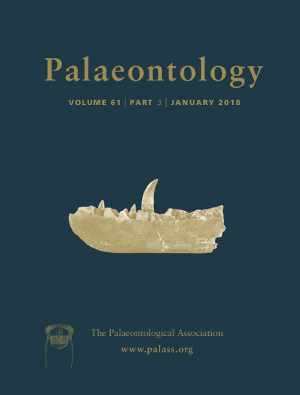Reg. Charity No. 1168330

We describe a new assemblage of small carbonaceous fossils (SCFs) from diagenetically minimally altered clays and siltstones of Terreneuvian age from the Lontova and Voosi formations of Estonia, Lithuania and Russia. This is the first detailed account of an SCF assemblage from the Terreneuvian and includes a number of previously undocumented Cambrian organisms. Recognizably bilaterian‐derived SCFs include abundant protoconodonts (total‐group Chaetognatha), and distinctive cuticular spines of scalidophoran worms. Alongside these metazoan remains are a range of protistan‐grade fossils, including Retiranus balticus gen. et sp. nov., a distinctive funnel‐shaped or sheet‐like problematicum characterized by terminal or marginal vesicles, and Lontohystrichosphaera grandis gen. et sp. nov., a large (100–550 μm) ornamented vesicular microfossil. Together these data offer a fundamentally enriched view of Terreneuvian life in the epicratonic seas of Baltica, from an episode where records of non‐biomineralized life are currently sparse. Even so, the recovered assemblages contain a lower diversity of metazoans than SCF biotas from younger (Stage 4) Baltic successions that represent broadly equivalent environments, echoing the diversification signal recorded in the coeval shelly and trace‐fossil records. Close comparison to the biostratigraphical signal from Fortunian small shelly fossils supports a late Fortunian age for most of the Lontova/Voosi succession, rather than a younger (wholly Stage 2) range.